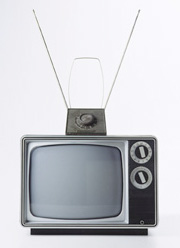| "Miracle of the Hub" | ||||||||||||||||||||||||||||||||||
 |
Disneyland's circular central hub is nothing
short of a true moment of design genius. I like to think of it as having
a symbolic reference to a television set where each click of the large
round dial would take you to a different station. At Disneyland, the hub
is also round, and each "click" takes you to a different land. This
method of orientation hadn't been applied previously to outdoor
entertainment, and with Walt's method of using a "weenie," people were
constantly moved throughout the park and avoided being too confused or
too bottled up in one area. There was always one visual marker to pull
you on to the next. The Train Station pulled you from the parking lot
(right through the main gate and ticket area), the castle pulled you
down Main Street, USA, and at the hub, Tomorrowland's rocket,
Frontierland's steamship or Adventureland's tiki idols and jungle plants
would continue to pull visitors.
Main Street itself was a major step forward in retail design as it relates to tourist attractions and retail design in general. As mention in the first amusement park lecture, the World's Columbian Exposition in Chicago introduced the world to many things, including the "midway." This long, unidirectional path contained numerous opportunities for guests to spend money, with rides pulling guests from one end to the other past places to eat and buy things. Main Street, USA takes this concept and by combining it with forced perspective, made the perfect entry funnel for the park. It partially happened by accident as many of the stores were simply fašades when the park first opened, and weren't filled in with actual shops until the retail potential was fully realized. Meanwhile, mall designers (the first enclosed mall also opened in 1956 - a year after Disneyland) paid close attention to Main Street (and vice versa), and department stores were substituted for the castle and train station, making most malls of the 50s, 60s and 70s repeats of the Disney model. (It's clear that both malls and Main Street, USA influenced each other, and in fact, during much of the park's first two decades, guests could buy a special "shopping pass" that allowed them entry to the park, but did not include any attraction tickets. It was just a pass to shop on Main Street.) While the World's Columbian Exposition concentrated on monumental Beaux Arts architecture, the competing concept for city design and urban planning of the late 1800s was the "garden city." Interestingly, while many Northeastern and Great Lakes region cities adopted the Beaux Arts "monumental core," many Southeastern and Western cities (and suburbs all over the country) adopted the garden city model. Disneyland itself is based on the garden city. The garden city would eventually dominate in the US, with most suburbs built between 1940 and 1990 being based on this concept. |
|||||||||||||||||||||||||||||||||
|
||||||||||||||||||||||||||||||||||